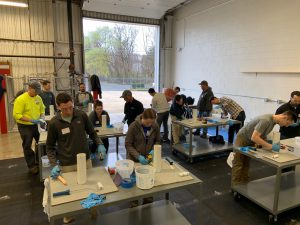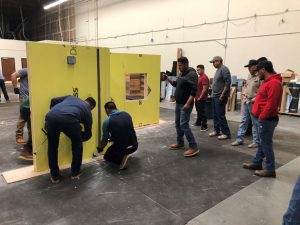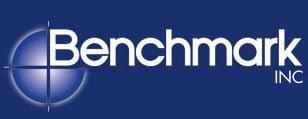 By Curt Liscum, RRC, RRO
By Curt Liscum, RRC, RRO
Senior Consultant
You have done your due diligence, retained a qualified consultant to develop an accurate set of construction documents, selected great quality materials for your new roof and hired a safe professional contractor to install the project. But how do you know that the mechanics installing the materials are trained and qualified to install the specific products in your roofing assembly?
For years, other than some union apprenticeship programs and private/contractor provided programs that taught the basics of roofing, skills were learned through on-the-job-training (OJT) passed on from experienced job site foremen and leadmen to those new to the roofing trades. This worked well for years, then roof systems got complicated, product installation got more complex, and labor shortages abounded throughout the industry. In addition, foremen took on a larger role in personnel management, production scheduling, and material logistics and had less time for OJT. To produce better and provide more labor friendly products, roofing material manufacturers started making their products more complex and “different.” Although different can be good, it is still different, and one must adapt or learn what the changes entail.
Manufacturer Training Programs
Many years ago roofing material manufacturers started offering informal applicator training programs. These training courses started out being very general in nature, were sales oriented, and had very little hands-on or practical installation requirements. They were generally provided to estimators, project managers, and contractor owners to “woo” these decision makers into specifying or purchasing a given manufacturer’s products. As the industry evolved, so did the manufacturer’s training programs. In addition to product demonstrations (for courting decision makers), manufacturers began to develop and offer applicator specific training opportunities. These training opportunities were manufacturer product specific and were offered at the manufacturer provided training centers, contractor shops, material distributor yards and union training centers. The training generally had a significant hands-on or practical element and was geared to the rooftop applicator. Some of the manufacturers would provide photographic identification cards indicating courses completed.
The downside to this training was the cost incurred by the contractor for “off-site” training, taking mechanics out of production in a labor-short industry, and the fact that one manufacturer would not recognize another manufacturer’s training. This meant that if the roofing crew installed the same generic product (PVC single-ply) from two or three different manufacturers, they would need to attend two or three different training courses.

Liquid applied flashing training. Photo credit Soprema.
NRCA ProCertification
The National Roofing Contractor Association (NRCA) helped standardize and professionalize the roofing industry through development of the NRCA ProCertification program. This national certification initiative allowed experienced applicators who demonstrate substantial skills and knowledge to become certified by NRCA in the installation of specific a roof system. Through the ProCertification program, NRCA hopes to provide national professional recognition that independently validates expertise, provides certifications that stay with the mechanic throughout his or her career (regardless of company or union), increases employer confidence, and establishes value and pride knowing that the applicator is a leading professional in the industry. The system specific certification consists of each applicator passing an online knowledge exam and a hands-on performance exam where they demonstrate installation skills of the generic system while following industry safety standards. Currently the NRCA has developed certifications for Roofing Foremen, Asphalt Shingle Systems, and Thermoplastic Systems (PVC and TPO). Other system certification programs will be developed based on industry market share.
The programs are off and running and have been spreading throughout the country. Concerns heard in the field have been that the process is expensive and only certifies generic system installation (not manufacturer specific requirements). Some generic detailing or application recommendations may cause concerns for manufacturer acceptance and warranty delivery.
Applicator Training Program
So, what constitutes a “good” applicator training program? First, product or application specific information. Application of an adhered PVC single-ply system is much different than an induction-welded mechanically attached system. Each course should address specific installation recommendations and concerns. Second, the course should include a general review of the products with storage and handling recommendations. Third, the primary focus of the course should be hands-on training in the installation and detailing of the system. Finally, both the product review and hands-on portion of the course should conclude with verification including a written knowledge exam and practical hands-on performance exam. Course completion should be recorded though the use of a dated photographic identification certificate that indicates successful completion in the application of a specific roofing system.

Air barrier installation training. Photo Credit Soprema.
Back to the initial question, “How do you know that the mechanics actually installing the materials are trained and qualified to install the specific products in your roofing assembly?”
Following are a few tips to consider:
- Use manufacturers that have developed and support system specific training programs. The best products in the world, if installed incorrectly, will be prone to problems.
- Require by specification that key mechanics (foremen and two or three leadmen) are trained by the manufacturer in the specific requirements for application of the material to be installed on the project. Possible specification language could include:
Provide individual dated and photographic identified documentation that workers installing roof and flashing membrane have received appropriate training by the roof material manufacturer in proper application of the roofing and flashing membrane system being installed. - Support, by specification, that a few of the mechanics are vested in the industry by participating in the NRCA ProCertification program.
- Check and verify course completion cards during the submittal process.Rightfully so, safety has been elevated to a position of extreme importance within the roofing industry. Course attendance, exam verification and card documentation are common. Isn’t it time for application quality to take an equal position through course attendance and knowledge verification?
Please do not hesitate to contact your Benchmark, Inc. consultant to discuss ways to ensure trained mechanics are installing your next roofing system.
